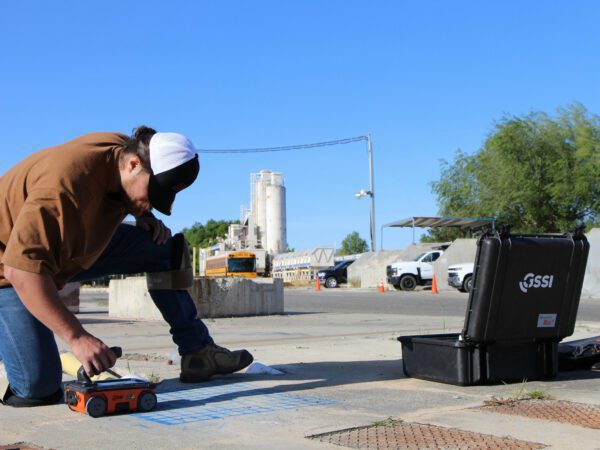Reliable Concrete Scanning Methods for Construction Jobs
Reliable Concrete Scanning Methods for Construction Jobs
Blog Article
Reveal the Transformative Power of Concrete Scanning in Making Best Use Of Performance and Safety
Concrete scanning has arised as an important device in the construction industry, providing exceptional advantages in boosting task performance and making sure safety and security criteria. The transformative power of concrete scanning exists in its capacity to supply real-time data and detailed insights, reinventing just how tasks are planned and implemented.
Relevance of Concrete Scanning
Making sure the structural honesty and safety and security of building and construction tasks starts with the vital step of carrying out comprehensive concrete scanning. Concrete scanning is a non-destructive approach made use of to find and map subsurface components within concrete structures.
The significance of concrete scanning can not be overstated, as it plays a crucial role in preventing crashes, decreasing task hold-ups, and making sure the lasting toughness of the construction. By recognizing potential dangers before the construction phase starts, builders can implement proper precaution and make notified choices relating to the style and implementation of the project. In addition, concrete scanning assists in maximizing project timelines and budget plan by avoiding unexpected prices and delays that may arise because of unanticipated obstructions within the concrete. Ultimately, buying comprehensive concrete scanning is a positive strategy that boosts both performance and security in construction projects.
Just How Concrete Scanning Works
Concrete scanning runs as a crucial tool in building tasks by using sophisticated modern technologies to spot and map subsurface elements without causing structural damage. Ground Permeating Radar (GPR) and Electromagnetic Induction (EMI) are two primary techniques utilized in concrete scanning. GPR works by releasing high-frequency radar pulses into the surface, which recuperate when they run into subsurface objects or voids. The time taken for the signal to return shows the depth and location of the things. EMI, on the other hand, utilizes magnetic fields to determine differences in product make-ups, such as recognizing rebar or conduits within concrete frameworks.
During the scanning procedure, the information gathered is evaluated in real-time, enabling instant recognition of potential risks or barriers underneath the surface area. By using these innovative technologies, concrete scanning substantially lowers the danger of pricey damages and injuries on building and construction websites.
Advantages of Concrete Scanning
Making use of innovative scanning innovations in building and construction projects offers a wide variety of advantages, improving both performance and safety and security on-site. One of the primary benefits of concrete scanning is the capability to find and locate ingrained items such as rebar, post-tension cables, and channels accurately. By identifying these aspects before exploration or cutting right into concrete structures, the threat of accidental strikes is considerably reduced, avoiding possible injuries to employees and damage to the structure itself. Concrete scanning assists in planning and developing more effectively, as it supplies precise details about the place and depth of structural parts.

Situation Studies: Concrete Scanning Success

In an additional case, a construction firm made use of 3D concrete scanning to analyze the condition old concrete frameworks in a historic building. The thorough scans supplied useful understandings into the extent of deterioration and helped prioritize maintenance initiatives effectively. By proactively attending to locations of concern recognized through scanning, the company had the ability to expand the life expectancy of the framework and ensure owner security.
These study emphasize the transformative power of concrete scanning in improving efficiency, precision, and security in building jobs.
Applying Concrete Scanning in Projects
Implementing innovative scanning modern technologies throughout building projects has actually become increasingly essential for improving accuracy and safety and security. By integrating concrete scanning into job planning and execution, construction groups can identify potential threats, such as rebar or post-tension wires, hidden within concrete frameworks. This proactive approach minimizes the risk of crashes, hold-ups, and pricey rework, inevitably bring about much more reliable job timelines and budget plans.
To apply concrete scanning navigate to these guys efficiently, project managers should collaborate very closely with knowledgeable scanning professionals to determine one click this link of the most appropriate scanning strategies for the details job demands. Involving scanning experts from the beginning of a job makes it possible for the group to produce thorough scanning plans that address vital areas of problem and guarantee comprehensive data collection.
Moreover, incorporating concrete scanning right into routine task operations can enhance decision-making processes, as real-time check information provides instant understandings right into the problem of concrete structures - Concrete Scanning. This data-driven method helps with educated analytical and makes it possible for teams to make modifications immediately, fostering a culture of efficiency and safety throughout the task lifecycle

Final Thought
Finally, concrete scanning plays a critical function in boosting effectiveness and safety in building projects. By using advanced innovation to identify and map out underlying structures within concrete, this procedure assists to avoid expensive mistakes, ensure structural stability, and reduce risks on website. With the capacity to discover covert elements and supply exact data, concrete scanning proves to be a useful device for enhancing task outcomes and taking full advantage of overall success.
Concrete scanning is a non-destructive technique address made use of to detect and map subsurface components within concrete structures. Additionally, concrete scanning aids in maximizing task timelines and budget plan by staying clear of unexpected costs and delays that might emerge due to unforeseen blockages within the concrete. One notable instance study entails a large-scale renovation project where concrete scanning played an important function in making sure project success.In an additional instance, a building business made use of 3D concrete scanning to examine the condition of maturing concrete structures in a historic building. By integrating concrete scanning into project planning and execution, building and construction groups can identify possible risks, such as rebar or post-tension cords, concealed within concrete frameworks.
Report this page